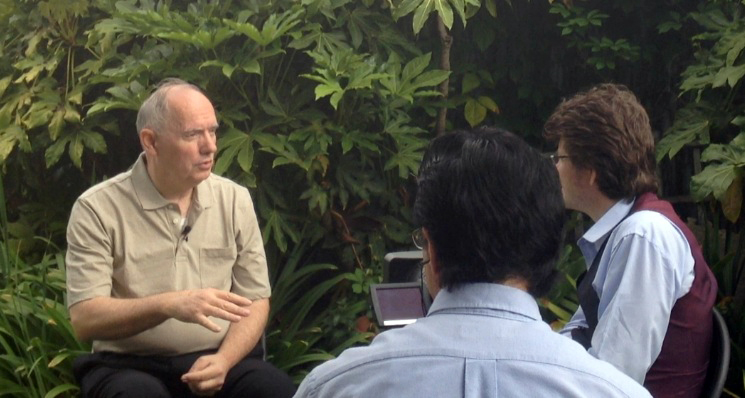Last September Aaron Wright interviewed me for an Australian radio-podcast, recorded for audio editing. Here is part of it.
. . . Aaron Wright: So how large are these creatures?
Jonathan Whitcomb:
The largest ones are very rare. But they’re so large that they cannot be mistaken if a person sees one. I’ll give you an example. In Perth, Australia, (I believe the year was 1997), it was in December, a couple was taking a walk. . . . They saw a creature flying up, and eventually they came to the conclusion that it could be as large as fifty-foot wingspan, from tip-to-tip of the wings.
Aaron: Fifty foot!
Jonathan:
But we have a number of other sightings across the southwest Pacific and in other parts of the world, including California in the United States, in which there are rare cases of a very large creature being sited in the daytime.
Just a few years ago, a man was driving in the daylight, in clear daylight, in Orange County, in Southern California, and he was startled to see this creature fly up from the marshy area on his left. It flew over the road—it’s . . not too far above the road in front of him. And he says that the length from the nose (the front of the beak or whatever it was) to the end of the tail was the same as the width of the road. Now I went out there and I measured it: It was thirty feet. And he said about sixteen feet of that length was tail.
Aaron:
In your opinion, Jonathan, how do you think that these creatures have managed to exist for as long as they have, and yet science still won’t accept that they are actually out there?
Jonathan:
The challenge is still well within the realm of cryptozoology—we have eyewitnesses from around the world—but it’s so much against the common teachings that we have in Western countries like in the United States, for example, and we’re taught from childhood that they’ve been extinct for millions of years: All dinosaurs and pterosaurs are just ancient primitive creatures.
Not everybody believes that. My associates and I—we [have] a very different view. We are not convinced that they are ancient. There’s a major problem in the Western assumptions and origin philosophies. It’s kind of a complicated question.
The pterosaurs that are still living, there are very few species: maybe . . . only three or four species. They just basically keep away from people. . . . We have historical documents that kind of explain that because . . . historical records (some people think that they’re only mythical) but there are legends that indicate that people have gone out and killed these creatures, because they’re just a nuisance, a danger to humans in past centuries.
.

Whitcomb (left) interviewed for a Canadian television talk show (only indirectly related)
.
Whitcomb on Radio Talk Show in Australia (recorded for a podcast)
Aaron Wright:
Joining me today is Jonathan David Whitcomb, author of Live Pterosaurs in America and a new book which has just come out: Live Pterosaurs in Australia and Papua New Guinea. Thanks for joining us, Jonathan; how are you today?
Jonathan Whitcomb: Oh, great! Thanks very much for inviting me.
Aaron:
Oh, you’re very welcome. So let’s just talk about ropens . . . and pterosaurs. What are these creatures? I thought they were extinct.
Jonathan:
Most species of pterosaurs have become extinct at some time in the past . . . What we’re trying to portray to the world is that we’ve discovered a large number of eyewitnesses, from different parts of the world, who testify of something that couldn’t be anything other than one or more species of living pterosaur. I’ll give you an example. In Papua New Guinea, some of the villagers, the language that they speak, they have a word called “ropen,” and that designates a large nocturnal flying creature. And we know from eyewitnesses that it has a long tail, and it has a bioluminescent capacity. It glows for a few seconds at a time at night, as it’s flying.
“I know what it was. It wasn’t a heron; it wasn’t a vulture . . .” The eyewitness was shocked to see that the creature had both a head crest (common in Pterodactyloids) and a long tail with a “diamond tip” (common in Rhamphorhynchoids).
Pterosaur Sighting in a Newspaper
. . . Yesterday, Mr Whitcomb and his local guide showed up at the Post Courier office in Lae to tell of his study. He said the stories were not just myth but actual sightings of a real animal and he was there to try to capture it on film.
.


